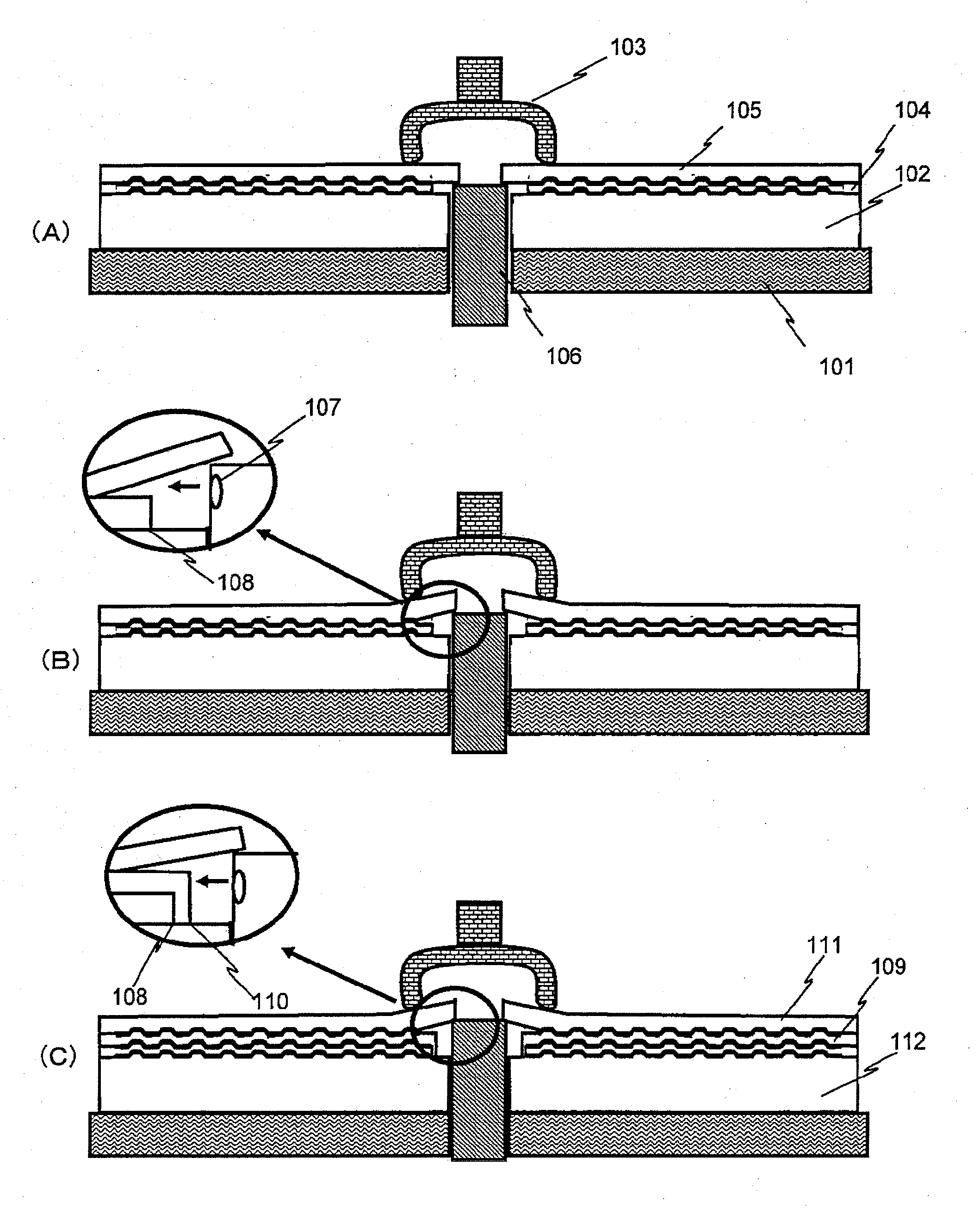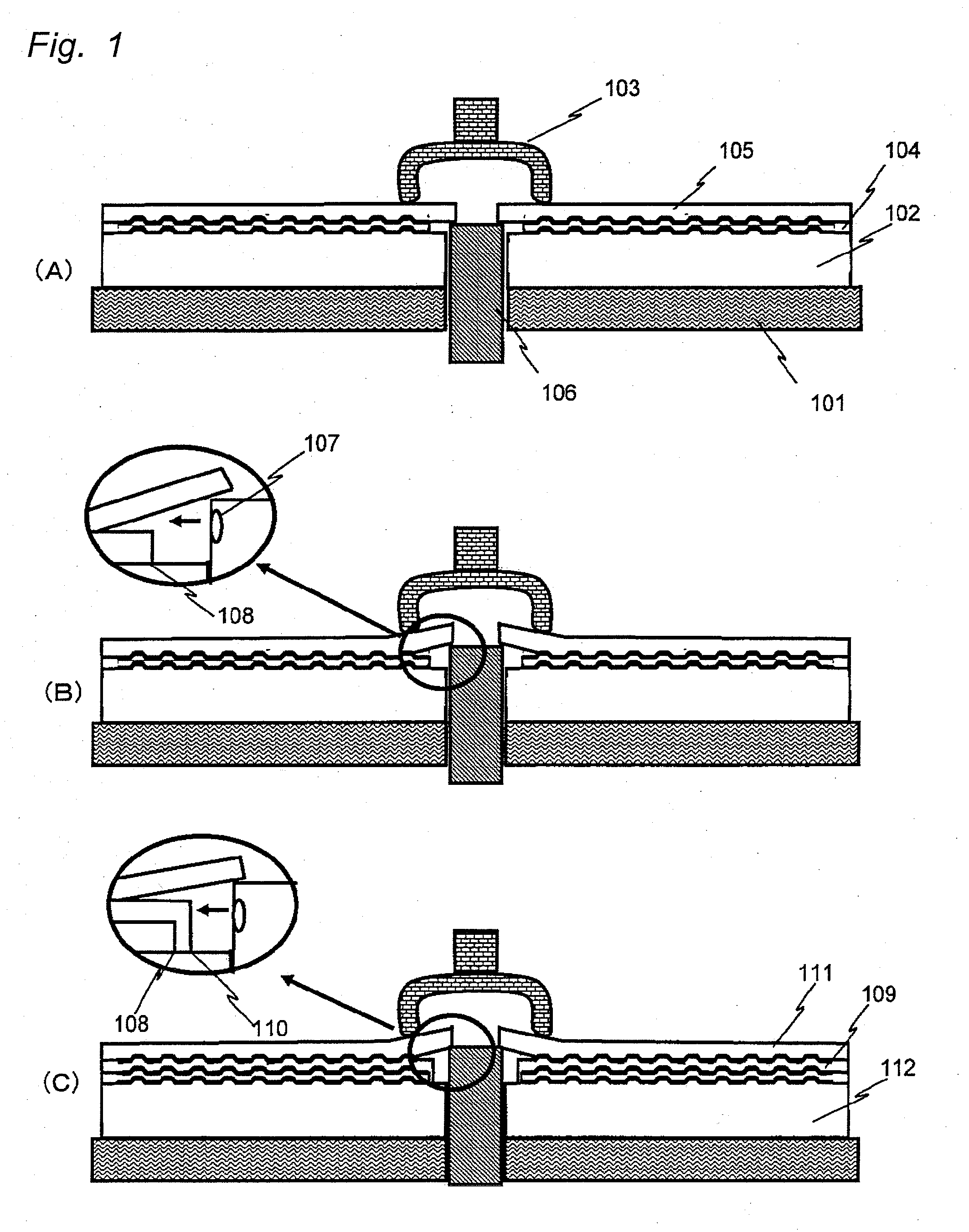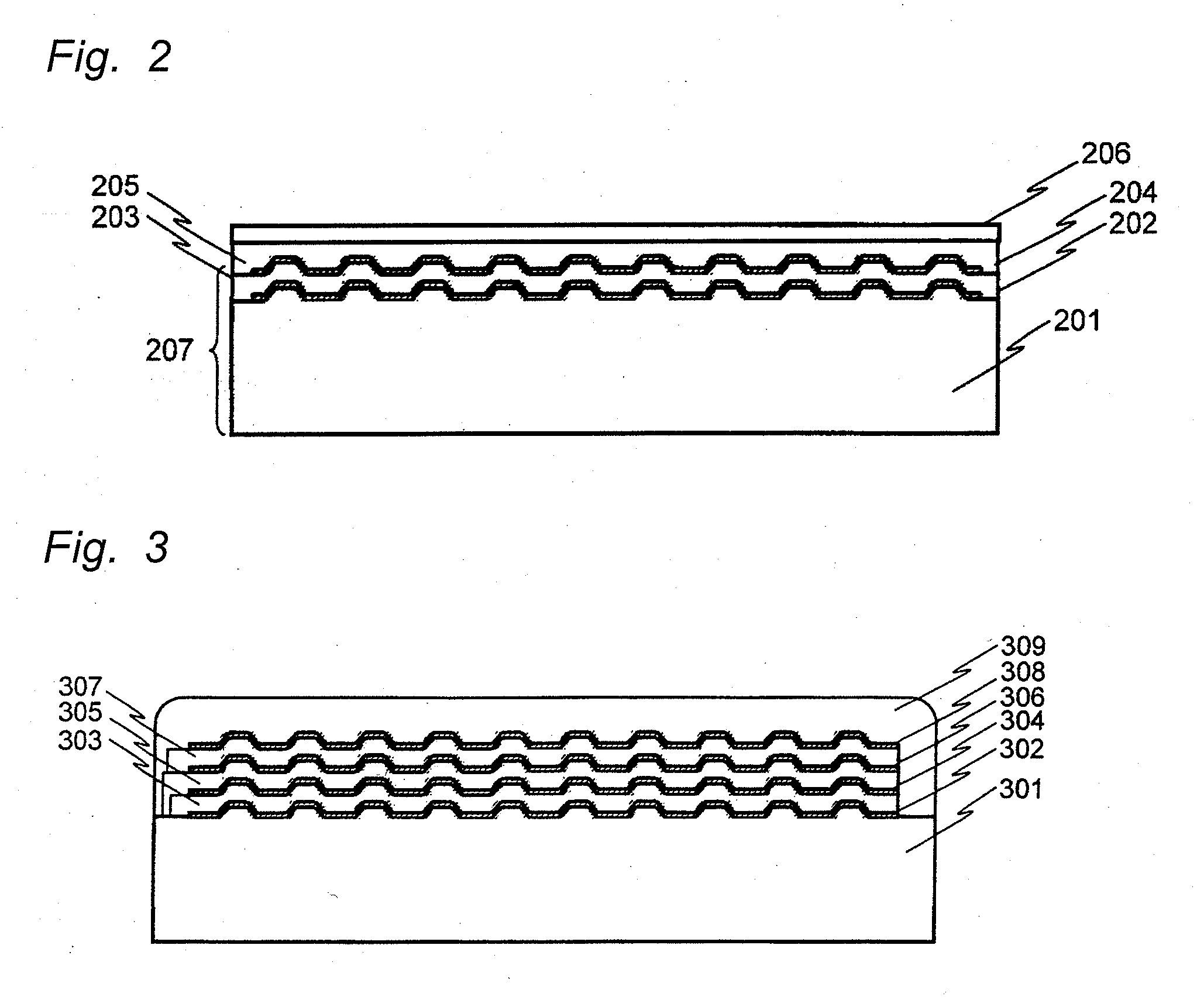Multilayer information recording medium and method for manufacturing the same
- Summary
- Abstract
- Description
- Claims
- Application Information
AI Technical Summary
Benefits of technology
Problems solved by technology
Method used
Image
Examples
first embodiment
[0082]FIG. 7(A) shows one embodiment of the four-layer information recording medium in sectional view. This drawing is a sectional view of the information recording medium constituted from a first information recording layer 702, a first resin layer 706, a second information recording layer 703, a second resin layer 707, a third information recording layer 704, a third resin layer 708, a fourth information recording layer 705 and a protective layer 709 that are stacked in this order on a substrate 701.
[0083]In this embodiment, positions of the ends on the inner circumference side of the resin layers are all made different and the ends on the inner circumference side of all the resin layers are in contact with the substrate 701. For example, when the inner diameter of the substrate 701 (diameter of the center hole) is 15 mm, three resin layers may be formed so that the inner diameter of the first resin layer 706 (equal to the diameter of a circle defined by the end on the inner circu...
second embodiment
[0094]FIG. 7(B) shows another embodiment of the four-layer information recording medium in sectional view. This drawing is a sectional view of the information recording medium constituted from a first information recording layer 714, a first resin layer 718, a second information recording layer 715, a second resin layer 719, a third information recording layer 716, a third resin layer 720, a fourth information recording layer 717 and a protective layer 721 stacked in this order on a substrate 713.
[0095]In this embodiment, too, positions of the ends on the inner circumference side of the resin layers are all made different in order to prevent defects from occurring during peel operation. Specifically, the end on the inner circumference side of the first resin layer 718 is located nearest to the inner circumference of the substrate 713, the end on the inner circumference side of the second resin layer 719 is located nearer to the outer circumference of the substrate than the end on th...
third embodiment
[0110]A method of dividing the resin layer into areas and differentiating the dose of ultraviolet ray irradiation among the areas when curing the resin layers will now be described as the third embodiment. In a multi-layer disk, transmittance greatly differs between the information recording region where recording layer is formed and the other region (referred to as “non-information recording region”). As a result, the resin layer in the non-information recording region is exposed to much ultraviolet ray every time the resin layer is formed.
[0111]The non-information recording region, as well as a method for manufacturing the information recording medium by changing the dose of ultraviolet ray irradiation, will be described with reference to FIG. 8. Resin layers 803, 805, 807 of ultraviolet curable resin and a transparent layer (or protective layer) 809 of ultraviolet curable resin are formed on a substrate 801, while a first information recording layer 802, a second information reco...
PUM
 Login to View More
Login to View More Abstract
Description
Claims
Application Information
 Login to View More
Login to View More - R&D Engineer
- R&D Manager
- IP Professional
- Industry Leading Data Capabilities
- Powerful AI technology
- Patent DNA Extraction
Browse by: Latest US Patents, China's latest patents, Technical Efficacy Thesaurus, Application Domain, Technology Topic, Popular Technical Reports.
© 2024 PatSnap. All rights reserved.Legal|Privacy policy|Modern Slavery Act Transparency Statement|Sitemap|About US| Contact US: help@patsnap.com










